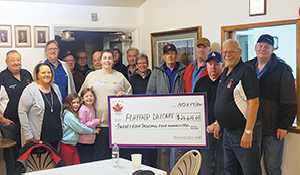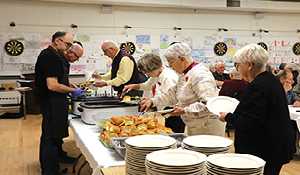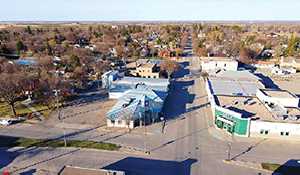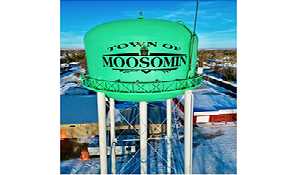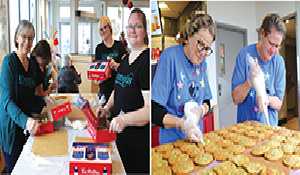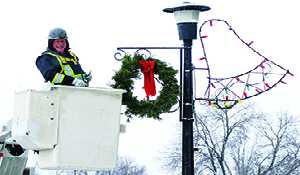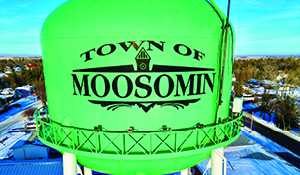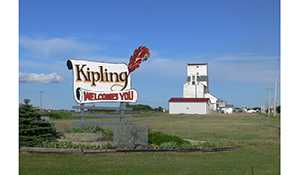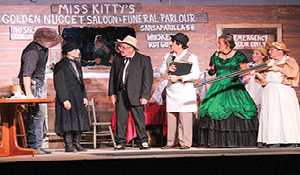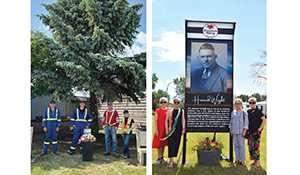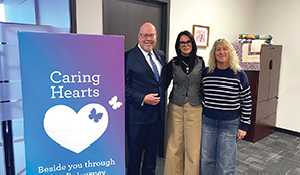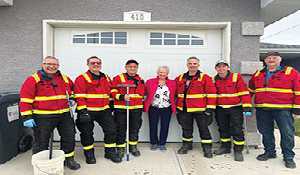École Saint-Lazare celebrates Red River cart at school
June 7, 2022, 4:23 pm
Sierra D'Souza Butts, Local Journalism Initiative Reporter
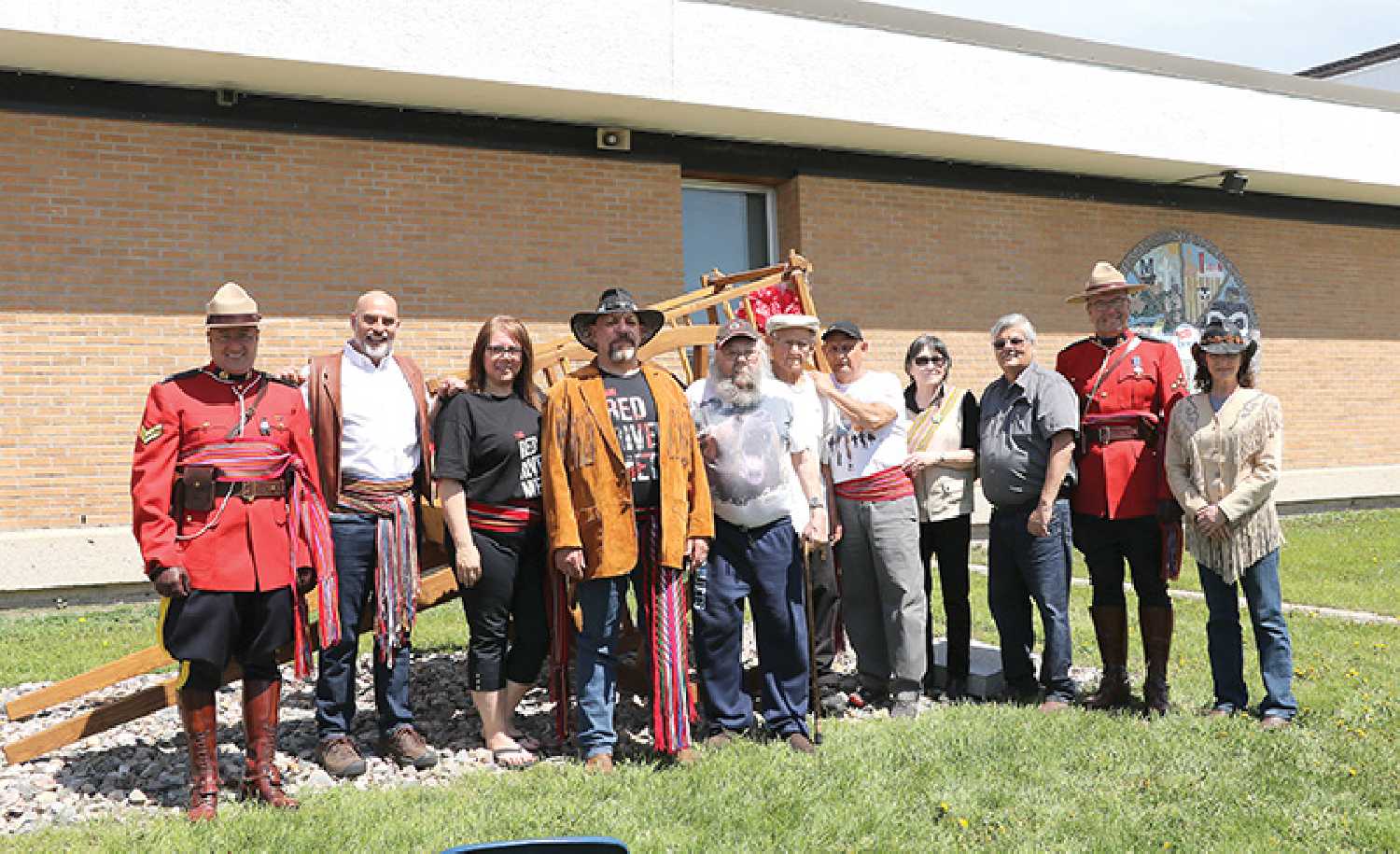

On May 27, the community of St. Lazare celebrated the unveiling of the Red River cart at the local school—École Saint-Lazare.
The cart was built at the school to symbolize the history of Métis in Southwest Manitoba, and reconciling the Metis and Francophone community of St.Lazare.
On behalf of David Chartrand, president of Manitoba Métis Federation (MMF) Southwest Region, vice president Leah LaPlante presented his speech.
“The Red River cart holds a lot of historic, practical, and sentimental value for the Red River Métis. Our ancestors relied so heavily on carts exactly like this one to settle the Red River Settlement,” she read.
“They required no nails, they were constructed of wood, and could be disassembled when needed to float across waterways. Along with settlement, these carts literally drove the economic trade in the North-West. Our people used carts like these to transport cargo to and from the Red River Settlement all across the North West.
“We were the economic engine of the West and these were our preferred mode of transportation for decades. The Red River Settlement was known across North America as the economic jewel of the North West because of our ancestors, and their use of Carts like these, you cannot tell the history of Western Canada without first telling the history of the Red River Métis. We shaped the political and economic landscape of Western Canada like no other people.”
LaPlante later shared what the meaning of having a Red River cart at the school means to her.
“It’s a perfect way for us to give opportunities to talk about Métis culture and encourage young Métis, who don’t know much about who they are because of the way their parents and grandparents were treated before,” LaPlante said.
“Today gives us a chance like this, for kids to stand around and talk to say hey I’m Métis, I can talk about being Métis, I can learn about being Métis. The community here of Métis people, we’ve been organized here for a long time and we would do things amongst ourselves, but it’s time that we get out like this and talk to people who have no idea what a Red River Métis is.
“We have a lot of people who want to learn more about that, there are high numbers of Métis people in this province and they’re still coming. I’m the minister responsible for citizenship too and we’re at the 140,000 mark of Métis people in Manitoba. I wouldn’t be surprised in another 10 years if we’re up by 100,000 because more and more people are coming out. They have the genealogy and they’ve always had the genealogy, it was just hidden because they were too ashamed and you can’t blame them, it was a different time back then.”
LaPlante spoke about how happy she is to see a Red River cart built at a school, and wishes something similar existed when she was a kid.
“I always watch the kids and they’re into this now, and they’re going to want to know more by living in a Métis community,” she said.
“Terry is a fantastic leader, he’s always pushing with trying to breakdown barriers all of the time. He might get booted away the first couple of times but he’s persistent, and you need that because now they’re building this togetherness and I think we will be seeing a lot of things happening around this cart, now that it’s here.”
The Red River cart was donated by MMFS to the school. As well, the parent committee of École Saint-Lazare, fundraised to help pay for the ceremony.
Thankful for the community’s support
At the event, Terry Haney president of MMF Fort-Elice local thanked the community for their support in helping the project come to light in St. Lazare.
“Thank you Leah for the kind words, first I would like to thank is the guy upstairs for this beautiful weather, and I would like to thank everyone for all the support we had in putting all of this together,” said Haney.
“I’m not going to mention any names because I might forget a few, but everyone who was involved thank you very much. This Red River cart is a symbol of our people, but real reconciliation starts in the school, it starts in the church, it starts in the sports world, and in public, because when I went to school here it was tough, but I’ve seen things grow.
“This town is better, everyone gets along, we have a great working relationship with our RM, our people. Leah mentions my name, but I’m just the leader. I have a very good local, I have a lot of people that work very hard that makes me look good, but behind the scenes there’s a lot of people doing a lot of work and I get the credit, but they all know who they are, they very work hard.
“We have good locals too, a lot has changed in the last 30 years because of them, we have Métis flags. This place from the start was a Métis Francophone community. Reconciliation takes time, it takes understanding, and we’re on the right path because I’ve never seen a community that has a great work relationship with our businesses like we do. Our businesses are great to us in helping raise money, so thank you very much.”
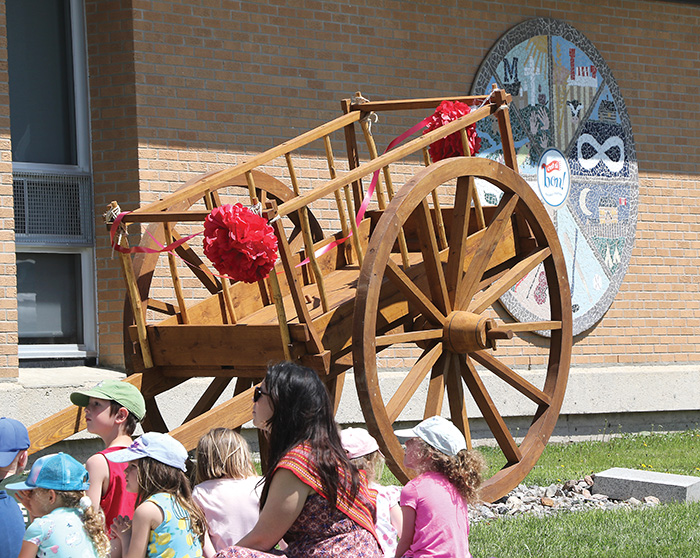

Cart builder shares the meaning of a Red River cart
Jerome Cartworks, a Métis homeland cart builder company, built the Red River cart for École Saint-Lazare.
“We’ve been experiencing a real resurgence of Métis culture over the last number of years and we are proud to be a part of it, this event that is going on today is a part of it too,” said Armand Jerome of Jerome Cartworks.
“The Red River cart represents everything with Métis culture, that includes the dance, the music, the speech, the revival of all those, and the most important thing is to provide all this and teach our youth, that’s why we really enjoy this.
“One of the reasons why I started getting interested in the Red River cart was because my dad, he’s originally from Turtle Mountain, but when I was a little kid he told me this story about our ancestors about our great grandfather, talking about building a Red River cart.
“Once he showed me the cart he looked at my face like I was supposed to be really surprised, but back then I didn’t really know what a Red River cart was or what he was talking about, and I remember him looking at me surprised that there was no emotion of excitement on my face.
“I’ve never really forgotten about that, it was only years later when I started working with Métis people and started building carts, and now I know what my dad was talking about. Now you don’t have to worry about that, as long as the Métis people keep on expressing their culture, teaching their culture and traditions, you won’t have to go through what I did and wonder what the meaning of a Red River cart is, thank you very much.”
Former mayor of the village of St. Lazare Martin Dumont, also said a few words.
He thanked the Division Scolaire Franco-Manitobaine and MMF for teaching youth in the community about Métis culture.
“Today is a day of reconciliation, by acknowledging the Red River cart as a major mode of transportation used by the Métis people, to develop our province and of course this community,” said Dumont.
“As the past mayor of St. Lazare and councillor for almost 30 years, it was one of my goals and still is today, to help elevate the existence of our local Fort-Ellice Metis to become a stronger local group. The four flags that you see on the billboard as you enter the municipality, was not automatically accepted when we first designed and discussed what should be on the billboard. The reasons back then were not wanting to recognize the Métis, being reluctant to be called Métis, but what time does to these old morals is to eradicate and educate everyone to respect all cultures.
“This isn’t easy, but it’s getting much better as we move forward. We have the four flags on the firehall that helps further identify the strong Métis and French presence we have in our village and municipality. As Terry mentioned, much of the work put in the past several years of the Fort-Ellice local has been quite positive, in elevating the great work that is being done here in the municipality, and the support received from the Métis government.”
In November 2021, the school also had a tipi built to encourage teachers and students to participate in traditional First Nations activities involving the tipi.
Richard Fiola, the principal of École Saint-Lazare spoke about why it is important to have Metis artifacts present at the school.
“Especially for our community that is Métis and history based community, we wanted a strong symbol that was visible to the area,” Fiola said.
“We have the Métis flag all over town, but with the school project of reconciliation, we wanted a symbol that would remind those young kids what their history is.”
He said the project helps bring the whole community together.
“We have our elders here today, we had young families, grandparents, people from all over the municipality and even people from other towns, it brought everyone back and also helps celebrate the beginning of summer. With this cart, what I wish is that the students have a history class and learn about all the past of the cart, and how this town got established by the Métis people.”
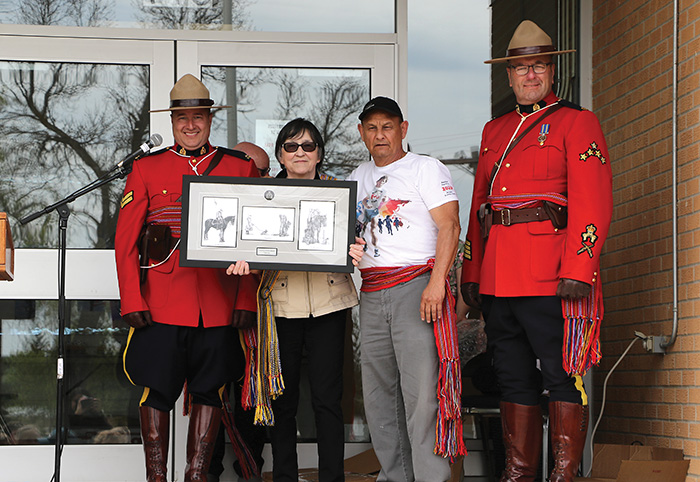
 Tweet
Tweet




















